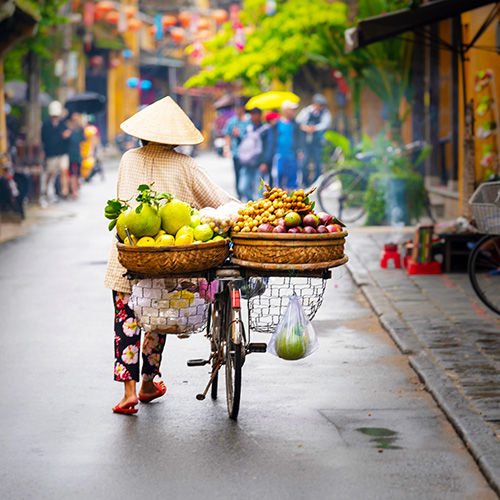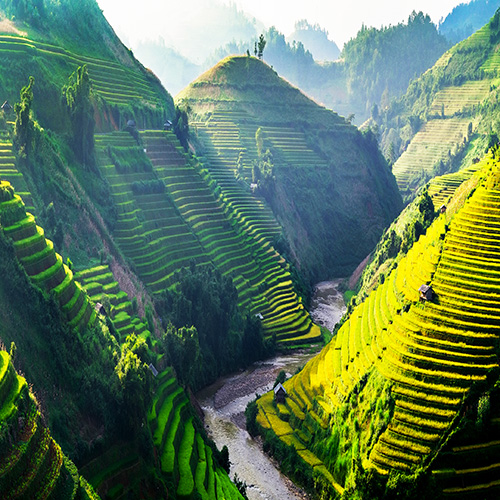Hanoi

Hoi An

Sa Pa

Nestled in the heart of Southeast Asia, Vietnam is a tropical land of green rice paddies, pristine beaches, charming villages and vibrant cities. A former French colony that has been independent since 1954, the country still retains vestiges of European influence in the architecture and the café culture, though it is the resilient and generous spirit of the Vietnamese, and their exquisite cuisine, that truly shines. There are many ways to experience Vietnam, from opulent resorts along the coast to private river cruises through historic towns to unspoiled tropical islands. Each region has its own weather pattern, but December through February is arguably the ideal time to visit, although the North will still offer cooler temperatures. Hanoi, the ancient capital, blends centuries of tradition with contemporary energy, from bustling streets and colonial architecture to tranquil lakes and art galleries. A short drive east is Halong Bay, a UNESCO World Heritage Site that reveals a surreal landscape of limestone islands emerging from emerald waters. Further north, Sapa’s mist-enshrouded mountains are home to diverse hill tribes and colonial relics, offering a blend of cultural richness and scenic beauty. The historic trading town of Hoi An, with its Japanese, Chinese and Vietnamese influences, has a charming UNESCO-listed old town filled with artisans and skilled tailors. It also offers easy access to white sand beaches along the central coast. Hue, the former imperial capital, boasts royal tombs, citadels, ruined palaces and a 17th-century Buddhist pagoda. Saigon (Ho Chi Minh City) is a dynamic metropolis, where colonial architecture coexists with modern skyscrapers and bustling markets. Coastal escapes like Mui Ne provide pristine beaches and adventurous activities, while Quy Nhon offers unspoiled natural beauty, historic ruins and a laid-back vibe. Across Vietnam, travelers will encounter a rich mix of evolving culture, natural splendor and fresh, flavorful food that nourishes body and soul.